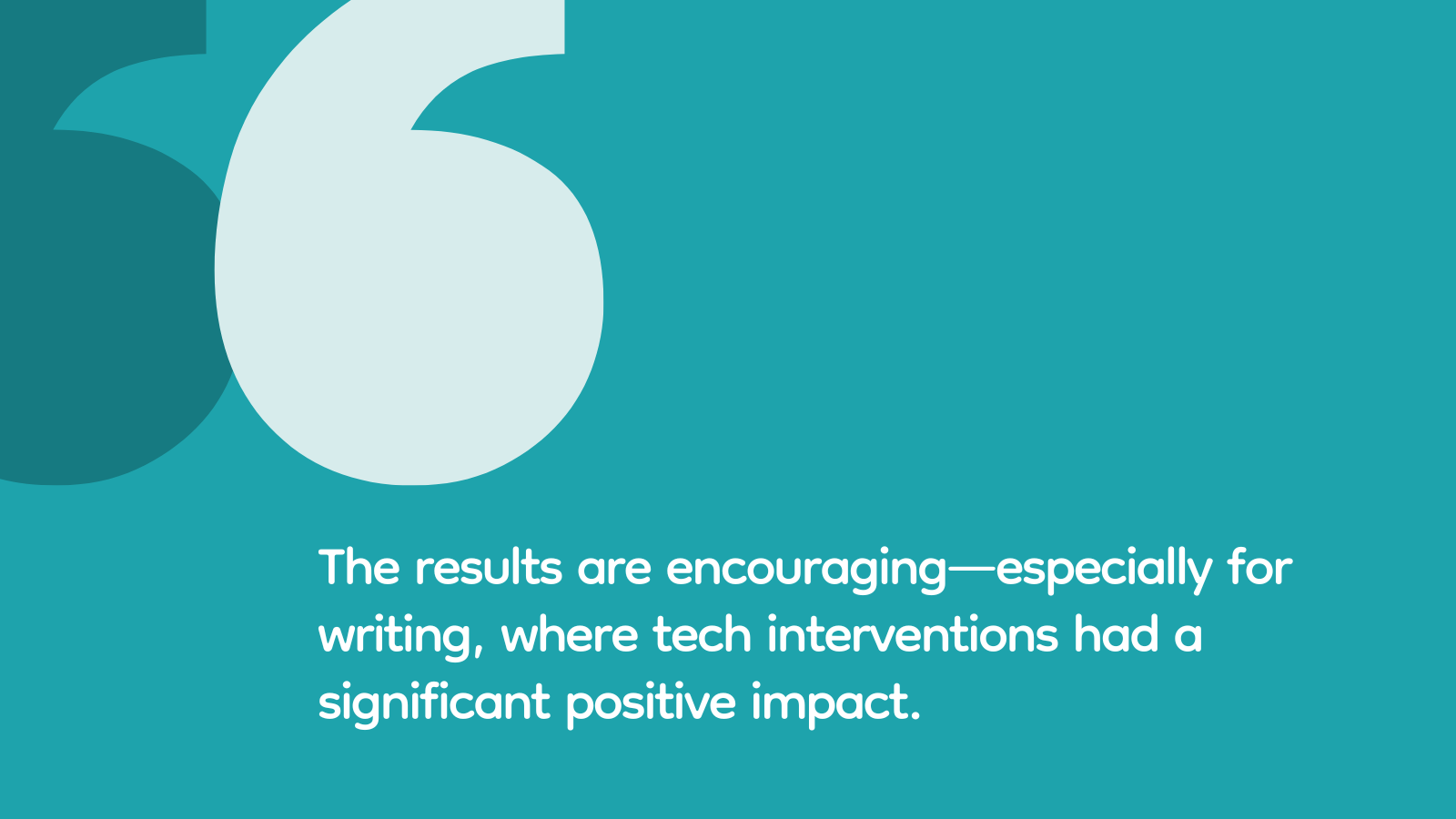Can Online Games and Tools Really Teach Kids How To Read?


We all know that technology is here to stay in our classrooms. From interactive whiteboards to educational apps, tech tools are becoming a daily part of teaching and learning (even among some schools trying to navigate back to paper-only!). But do these technology tools actually help our students improve their reading and writing skills? A recent meta-analysis by Rebecca D. Silverman and colleagues sheds light on this question, revealing how educational tech boosts literacy outcomes for elementary students.
Educational technology shows positive but varied results.
Meta-analyses aren’t like typical studies. They use prior findings from multiple different studies to create one big summary paper of findings. This meta-analysis used 119 studies published between 2010 and 2023, focusing on how various tech tools influence literacy skills like decoding, language comprehension, reading comprehension, and writing proficiency. The results are encouraging as we continue through the 21st century—especially for writing, where tech interventions had a significant positive impact. However, the study also found that when standardized tests were used to measure outcomes, the benefits were somewhat less pronounced. This makes sense because the standardized tests might not match the format of the tech tools students are used to.
Key findings from Silverman et al. (2024):
- Decoding improvement: Educational technology interventions showed a moderate positive effect on students’ ability to decode words (0.33 effect size).
- Language comprehension boost: The study found a similar moderate impact on language comprehension skills (0.30 effect size).
- Reading comprehension gains: While positive, the gains in reading comprehension were smaller (0.23 effect size).
- Writing proficiency leap: The most impressive results were in writing, where the effect size was a robust 0.81. (Note: In social science, this effect size is HUGE!)
Can we trust this research?
Not all research measures up equally! Here’s what our We Are Teachers “Malarkey Meter” says when it comes to this publication based on four key factors.
- Peer-reviewed? Absolutely! This meta-analysis went through a rigorous peer-review process, ensuring its credibility. Journals only invite the best social scientists to peer-review meta-analyses.
- Sample size: With data from 119 studies, this meta-analysis has a big enough sample size to strengthen the reliability of its findings.
- Trustworthy sources: The study is published in the “Big Kahuna” of educational research: Review of Educational Research. Plus, there is a large, reputable research team (Rebecca D. Silverman, Kristin Keane, Elena Darling-Hammond, and Saurabh Khanna) that comprises over 5,000 citations.
- Methodology: The research used advanced statistical techniques to analyze the impact of educational technology on literacy, focusing on different literacy outcomes over time. They systematically selected and analyzed these studies, including only those with strong, reliable methods in the final analysis. The goal was to provide a clear picture of how effective these technologies are in improving literacy for young learners.
What does this mean for teachers?
- Balance tech with traditional methods. This research shows that while educational technology can be a valuable tool in enhancing literacy, it shouldn’t be the sole method we rely on. For instance, while tech tools showed significant benefits in writing instruction, their impact on reading comprehension—especially when assessed through standardized tests—was less pronounced. Therefore, it’s important to integrate technology alongside traditional teaching methods to ensure comprehensive literacy development.
- Focus on evidence-based programs. Not all educational technology programs are equally effective. As Dr. Rebecca Silverman points out, “Educational tech boosts K-5 literacy, but there is wide variation in educational technology programs and not all of them are effective. Evaluate whether independent research supports the programs you’re considering and whether they are grounded in evidence-based practices.” This means that when selecting technology tools for your classroom, it’s crucial to choose those backed by solid research to ensure they will genuinely benefit your students’ literacy skills.
- Prioritize writing with tech. The study found that the most significant gains from educational technology were in writing proficiency. Therefore, incorporating technology into writing lessons could be particularly advantageous. Teachers might consider focusing on tech tools that specifically enhance students’ writing abilities as part of their literacy instruction.
Educational tech boosts literacy in elementary classrooms, but it’s essential to remember that it’s not a silver bullet. As educators, we should embrace the potential of these tools, especially for writing instruction, where the benefits are most pronounced. However, it’s equally important to critically evaluate and discern programs, ensuring they are supported by solid research and truly meet our students’ needs. Let’s continue to blend innovative tech with traditional, evidence-based teaching practices to create a balanced and effective approach to literacy education. And remember—teachers are always the experts!
Looking for more articles like this? Be sure to subscribe to our newsletters!
Source link




